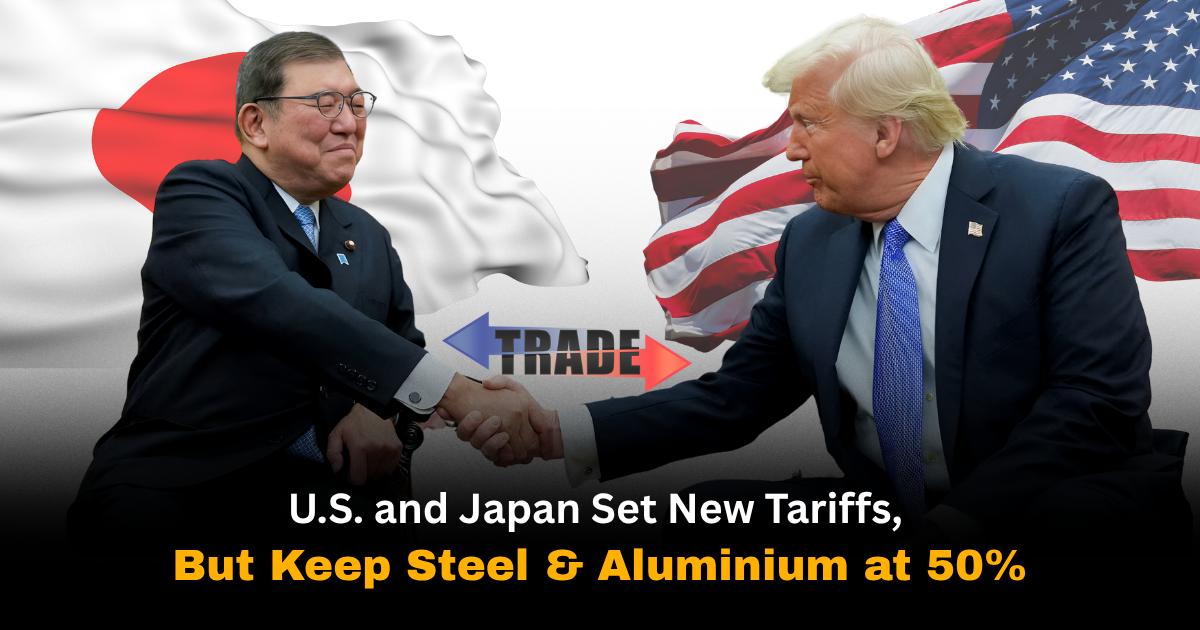India–US Trade Tensions Rise Over Steel and Auto Tariffs NMDC Limited reports a 38% drop in Q4 FY24 consolidated net profit RINL to Raise $23 Million Through Land Sales Amid Crisis

New U.S.–Japan Trade Deal Sets 15% Tariff Baseline
The United States and Japan have finalized a pivotal trade agreement that establishes a 15% baseline tariff on imports while retaining the 50% tariff on steel and aluminium. This deal is part of the broader U.S. shift toward a “reciprocal tariff” system, aligning duties with those imposed by trading partners.
Japan Gains Tariff Relief, Commits $550 Billion Investment
Set against a backdrop of rising protectionism, the agreement offers Japan tariff relief compared to earlier threats of 25% rates. In return, Japan will invest $550 billion into key U.S. sectors, including energy, semiconductors, agriculture, and auto parts manufacturing.
U.S. Automakers Worry About Competitive Disadvantage
While the deal aims to boost bilateral investment, U.S. automakers express concern over Japanese vehicles gaining an unfair price edge due to lower production costs and unchanged steel duties. Domestic manufacturers now face steeper input prices, especially as the 50% steel tariff increased in June 2025 continues to impact global supply chains.
Analysts See Deal as Model for Future Trade Talks
Trade analysts view this deal as a potential blueprint for future negotiations with the EU and China. It combines tariff predictability with strategic investments but also raises questions about fairness and long-term competitiveness in U.S. manufacturing.
Tariffs Evolve Into Tools of Economic Strategy
As the global trade landscape shifts, the U.S.–Japan pact underscores a key trend: tariffs are no longer just a tool of punishment, they're now instruments of policy design and economic leverage.
Also Read : United Steelworkers & Nippon Steel ink non-disclosure agreement SEC eases greenhouse gas reporting rules